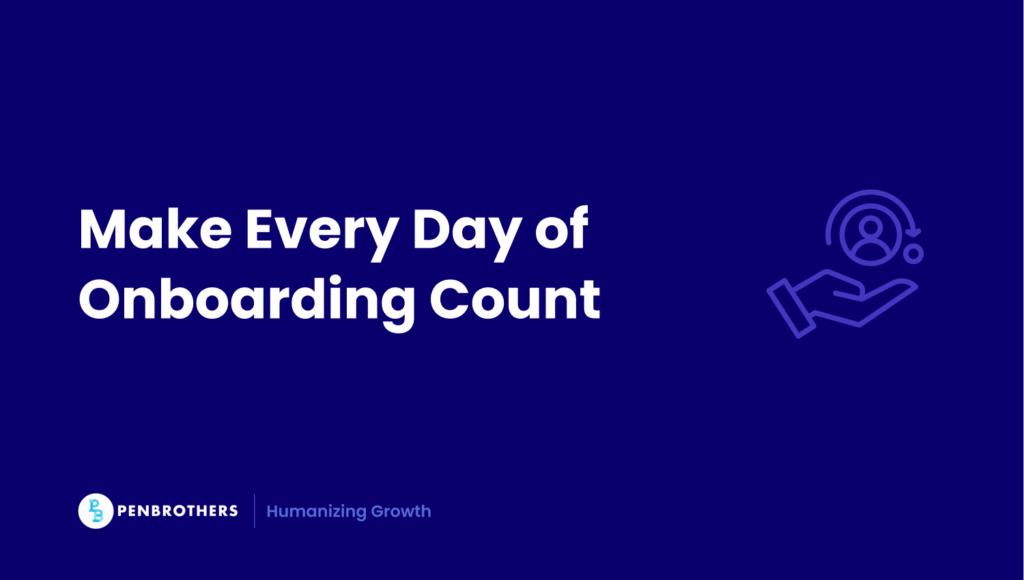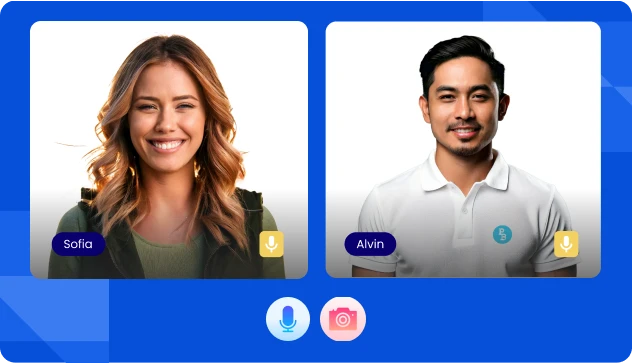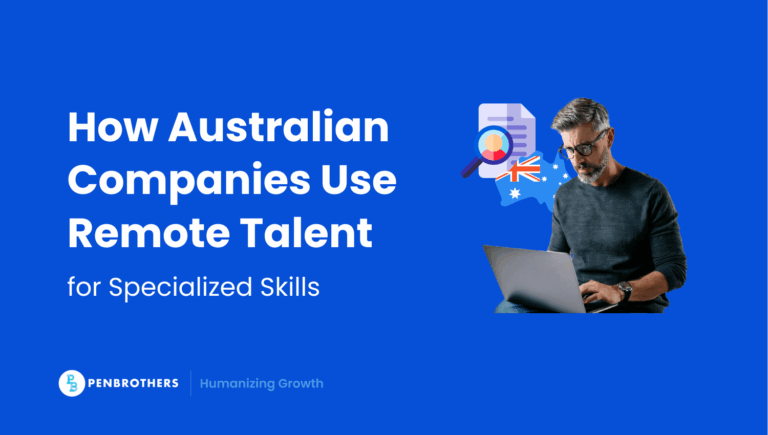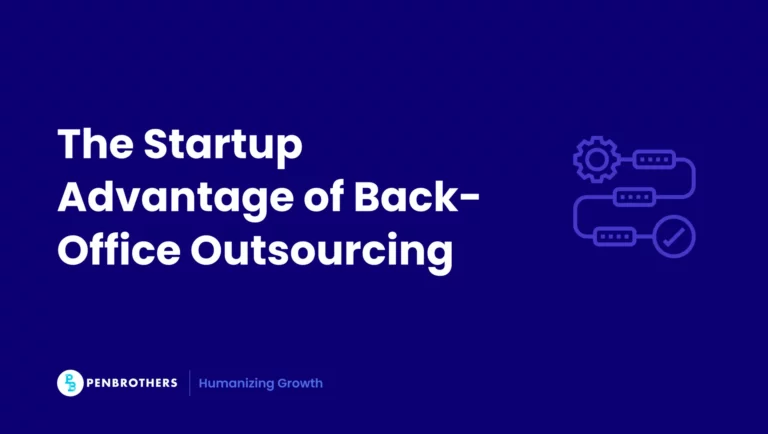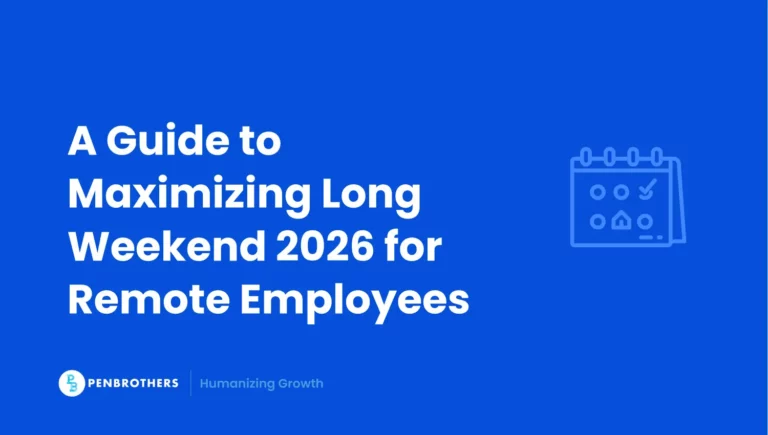Key Takeaways
- A Three to Six Month Process, Not a One-Week Event: The ideal onboarding program is a long-term, structured journey that lasts three to six months, or even up to a year for senior roles. A brief, one-week orientation is insufficient for achieving high retention and productivity.
- Onboarding is a Four-Phase Journey: A successful program is typically broken down into four distinct phases: Orientation (Week 1), Role Training (Weeks 2-4), Role Transition (Months 2-3), and Ongoing Development (Months 4-6), with each stage having a specific strategic goal.
- Measure Time-to-Productivity, Not Just Onboarding Completion: The most important metric for success is not how quickly an employee finishes the orientation checklist, but how quickly they become a fully contributing member of the team. This is known as “time-to-productivity,” and a well-structured onboarding process is designed to accelerate it.
- Remote Onboarding Requires Greater Intentionality and Structure: Onboarding a remote or offshore employee successfully requires a more deliberate approach than in-person onboarding. You cannot rely on informal office interactions; instead, you must build in structured check-ins, clear digital documentation, and formal relationship-building activities like a buddy system.
Organizations with a strong onboarding process improve new hire retention by 82% and productivity by over 70%, according to Brandon Hall Group. It’s not just a first impression, it’s a long-term investment. Yet, many companies stop onboarding after week one. That’s a mistake. Employees take up to eight months to reach full productivity, according to SHRM. This blog will help you design a timeline based on onboarding best practices that actually work.
What Is the Ideal Length of Onboarding?
Three to six months is widely considered best practice. For senior or high-impact roles, a full year is often more realistic and more effective, especially when managing offshore teams in thriving talent hubs like the Philippines. Here’s why this country consistently ranks as a top offshore destination.
Too many teams mistake time-to-onboard for time-to-performance. They’re not the same. A well-designed onboarding program doesn’t drag out the process. It accelerates clarity, alignment, and contribution.
And the data backs it up. Companies with structured onboarding programs see 50% higher new hire retention and 62% greater productivity in their first year.
The takeaway? Length alone doesn’t make onboarding successful. Structure does. And tailoring it to the role, context, and culture makes it even better. That’s where onboarding best practices come in and where we go next.
The 4 Phases of Onboarding (and Their Ideal Durations)
Understanding the phases of onboarding isn’t just about scheduling, it’s about strategy. Each stage plays a distinct role in shaping employee experience, accelerating productivity, and building long-term retention. Here’s how effective onboarding unfolds over time.
Phase 1: Orientation (Day 1 to Week 1)
Goal: Establish clarity, confidence, and connection.
This is where new hires first experience your culture, values, and expectations. It’s also the formal starting point of Penbrothers’ 180-Day Hypercare Framework, where a dedicated POC guides Day 1 setup, expectations alignment, and early integration.
What this includes:
- Personalized welcome message and team introductions
- Overview of company mission, structure, and leadership style
- Compliance, IT onboarding, and workflow setup
- Culture overview and communication norms
- Assignment of a peer buddy and introduction to support channels
Hypercare ensures that orientation isn’t just a welcome, it’s the foundation for long-term performance.
Phase 2: Role Training (Weeks 2–4)
Goal: Build functional confidence and skill readiness.
This phase transitions the hire from cultural orientation to role mastery. Hypercare supports this through structured check-ins and coaching to reinforce standards and eliminate early friction.
What this includes:
- Deep dive into role expectations, systems, and daily workflows
- Objective-based training tied to KPIs and measurable outputs
- Shadowing sessions and guided practice through job simulations
- Buddy mentorship and ongoing Q&A support
- Weekly manager check-ins aligned with the Hypercare Foundation phase (Days 1–60)
This ensures new hires don’t just understand the role, they understand how to succeed in it.
According to LinkedIn’s 2023 Workplace Learning Report, 49% of L&D professionals say their executives are concerned employees lack the right skills to execute business strategy.
That concern starts with how people are onboarded. The more intentional the learning path, the more aligned your workforce becomes.
Phase 3: Role Transition (Month 2–3)
Goal: Shift from learning to executing with consistency.
This stage aligns directly with the Performance Alignment phase (Phase 2) of Hypercare, where the focus is consistent performance, predictable output, and deeper collaboration.
What this includes:
- Bi-weekly performance reviews and coaching
- Application of learned skills in real, increasingly complex projects
- Feedback loops that identify blockers early
- SMART goal tracking for accountability
- Workflow optimization focusing on speed, accuracy, and SOP discipline
- Cross-functional collaboration and communication refinement
This phase ensures the employee is not just “doing work,” but doing it with consistency and quality.
Phase 4: Ongoing Development (Months 4–6)
Goal: Strengthen capability, autonomy, and long-term retention.
This aligns with the Autonomy & Retention phase (Phase 3) of Hypercare. Here, new hires begin to operate independently while developing longer-term career trajectories.
What this includes:
- Monthly performance reviews and career alignment conversations
- Skill expansion through stretch assignments or cross-training
- Development and leadership readiness planning
- Cultural reinforcement and deeper integration into team rituals
- Retention checkpoints and coaching to prevent disengagement
- Transition to fully autonomous workflow ownership
By the end of this phase, hires are not only productive but deeply integrated contributors with a clear growth path.
Key Factors That Affect Onboarding Duration
There’s no universal answer to “how long should onboarding take?” because onboarding isn’t one-size-fits-all. It’s adaptive. It flexes based on the role, the organization, and the individual.
Below are the most critical factors that determine the ideal length and depth of your onboarding program. Addressing these thoughtfully is what separates a functional onboarding plan from a truly effective one.
1. Job Role Complexity
The more strategic or technical the role, the longer it takes to onboard successfully. Engineers, analysts, and leadership hires often need weeks of systems immersion, stakeholder mapping, and operational context before contributing at a high level. Entry-level or task-based roles may require less time but still benefit from structure.
Pro tip: High-complexity roles often hit peak productivity after 6 months, not 4. Don’t rush the ramp.
2. Company Size and Structural Complexity
In larger or highly matrixed organizations, onboarding involves more layers: more people, more tools, more interdependencies. Understanding internal workflows, navigating approval hierarchies, and accessing resources can take longer than expected.
Smaller startups may offer faster onboarding due to leaner teams and flatter structures but they still need clarity and consistency.
3. Internal vs. External Hires
External hires start with a steeper curve. They’re learning not just the job, but the company’s culture, language, and systems from scratch. Internal transfers may know the culture but still need to unlearn old habits and adapt to new expectations.
A common mistake? Assuming internal moves don’t need onboarding. They do, just tailored differently.
4. Remote vs. In-Person Onboarding
Remote onboarding demands greater intentionality. You can’t rely on hallway conversations or visual cues to guide progress. Asynchronous communication, structured check-ins, and digital documentation become essential.
In-person onboarding offers more flexibility and spontaneous support. But it still requires a plan especially in hybrid settings where consistency is a challenge.
According to Gartner, only 43% of remote employees say their onboarding helped them feel connected to company culture, highlighting the critical role of structure and support in the first 180 days.
5. Technology, Infrastructure, and Automation
Modern tools can drastically reduce time spent on administrative onboarding. From automated account provisioning to self-paced LMS modules, tech-enabled workflows streamline repetitive tasks and free up HR for human connection.
However, poor IT setup or steep learning curves can derail momentum. Ensure systems are configured before Day 1, not during Week 1.
6. Interpersonal Support and Relational Onboarding
Onboarding isn’t just about documents and deadlines. It’s about relationships. When new hires feel supported by peers, managers, and mentors, they ramp up faster and stay longer.
Buddy programs, skip-level check-ins, and regular feedback loops can increase engagement and reduce time-to-productivity. At Penbrothers, our Hypercare model builds these into the first 180 days by default, not as a perk, but as a standard.
7. Learning Pace and Motivation
Every employee learns differently. Some are fast starters. Others build slowly but steadily. Your onboarding plan should have built-in flexibility to account for individual differences in learning style, experience, and personality.
Motivated hires with high initiative may move quicker but even they need time to integrate meaningfully into the team.
8. Availability of Collaborative Learning
Collaborative learning opportunities like shadowing, paired tasks, and peer reviews, accelerate both skill-building and cultural absorption. These aren’t “nice-to-haves.” They’re onboarding force multipliers.
Structured collaboration also reduces the burden on managers while building early cross-functional relationships.
Time-to-Productivity vs. Time to Onboard
When measuring onboarding success, it’s easy to focus on how long the process takes. But a more strategic metric is how effective that time is. This is where the concept of time-to-productivity becomes essential.
- Time-to-onboard tracks how long it takes to complete orientation, paperwork, training, and formal integration.
- Time-to-productivity, on the other hand, measures how long it takes for a new hire to become fully operational and contribute meaningful work.
These aren’t interchangeable. And conflating them can create blind spots.
For example, a two-week onboarding process might look efficient on paper but if it takes the new hire three additional months to perform at expected levels, the process likely skipped essential ramp-up steps. According to McKinsey, companies that invest in extended onboarding and long-term capability building see faster engagement, improved productivity, and stronger employee retention.
At Penbrothers, we help clients focus not just on speed but on sustained success. Through our Hypercare program, we reduce time-to-productivity by embedding structured coaching, alignment checkpoints, and progressive goal setting throughout the first 180 days. These interventions don’t slow things down, they prevent performance friction before it starts.
To improve time-to-productivity, consider:
- Weekly 1:1 check-ins during the first 180 days
- Clear KPIs that evolve across the onboarding journey
- Feedback loops that go both ways (new hire → manager and vice versa)
- Role walkthroughs and repeatable training assets
An effective onboarding process typically takes 1–3 months to complete, but productivity ramp-up often aligns with the end of the probation period (3–6 months). That’s the window to reinforce confidence, address misalignments, and set the foundation for long-term performance.
Ideal Onboarding Timeline: Month-by-Month Breakdown
A successful onboarding journey isn’t a checklist, it’s a strategic sequence. While the exact duration may vary by company, role, and setup, this timeline reflects what high-performing organizations and offshore partners like Penbrothers use to align, engage, and accelerate new hires.
Preboarding (1–2 Weeks Before Day 1)
This stage is often overlooked, but it’s where momentum begins. Use this window to reduce Day 1 anxiety and build early emotional connection.
What to do:
- Send a branded welcome kit and document checklist
- Share a team intro email or Slack thread to make them feel seen
- Provide early access to email, calendar, HRIS, and training portals
- Share a “First Week at a Glance” schedule with contact persons
- Deliver a digital primer on company culture, history, and values
Employees who experience structured preboarding are 58% more likely to stay beyond the first year.
Week 1: Orientation & Integration
This is your foundation-setting phase. The goal? Get the basics out of the way, build relationships, and make them feel they belong.
Key activities:
- Formal welcome by HR and direct supervisor
- Company introduction: mission, values, products, and roadmap
- Compliance and IT onboarding: security, policies, payroll
- 1:1s with key team members and stakeholders
- Assign a buddy or onboarding partner
- End-of-week reflection and Q&A session
Tip: Avoid overwhelming Day 1. Spread orientation across the week for better retention and comfort.
Month 1: Deep Onboarding
Now it’s about building capability. Equip the new hire with the tools, knowledge, and confidence to operate independently.
What to include:
- Role-specific training modules (functional and soft skills)
- First task or low-stakes project assignment
- Weekly 1:1 check-ins with their manager
- Buddy coffee chats and team rituals
- Pulse survey to assess onboarding experience and knowledge gaps
Use this month to normalize feedback loops and reinforce performance expectations early.
Months 2–3: Transition to Autonomy
At this stage, employees should be stepping into their role fully and owning outcomes. Your focus shifts to performance enablement.
What to do:
- Assign projects with increasing complexity
- Monitor SMART goals and adjust based on feedback
- Schedule bi-weekly manager check-ins and cross-functional syncs
- Recognize early wins and address any blockers
Months 4–6: Development and Retention Building
Your new hire is no longer “new.” But their future loyalty, growth, and contribution still hinge on what happens now.
Key focus areas:
- Introduce a personalized development plan
- Career mapping and aspirational goal setting
- Encourage cross-training or side projects for skill expansion
- Hold monthly check-ins with leadership
- Conduct a structured 6-month performance review and feedback session
At Penbrothers, we extend Hypercare beyond onboarding. We support long-term integration through communication calibration, performance coaching, and culture fit reinforcement.
Employees with structured onboarding that lasts beyond three months are 69% more likely to remain with the company for three years.
Penbrothers’ Success Story
How Pathlock Onboarded a Qualified Offshore Team in 30 Days
When speed meets precision, onboarding becomes a growth catalyst not a bottleneck.
That’s exactly what happened when Pathlock, a U.S.-based SaaS company in the cybersecurity space, partnered with Penbrothers to build their offshore team in the Philippines. Faced with mounting demand for their security solutions, Pathlock needed more than just fast hiring. They needed qualified, culture-aligned professionals who could integrate seamlessly into their existing support infrastructure.
“I needed to build a team as quickly as possible. Penbrothers allowed me to do that… we hired in 30 days or less.”
— Tony Daubenmerkl, VP of Support, Pathlock
Here’s how we did it:
- Goal: Build a high-quality offshore team quickly to reduce risk, expand operations, and avoid over-reliance on a single location.
- Challenge: Despite 12 years of experience opening teams in the Philippines, Pathlock still found it difficult to locate proactive talent who could contribute meaningfully from day one.
- Solution: With Penbrothers, they:
- Delegated recruitment while retaining full control of training and day-to-day management
- Set up a fully functional office space within two weeks
- Completed team hiring in under 30 days
- Outcome: The result was not just a team of qualified professionals but one aligned with Pathlock’s global KPIs, committed to long-term impact, and eager to be “change agents” within the company.
Penbrothers’ onboarding support didn’t stop at talent sourcing. Our Hypercare framework helped Pathlock integrate new hires efficiently, using structured check-ins at days 60, 120, and 180 to ensure early alignment and reduce ramp-up time.
This is a textbook case of how combining structured onboarding with flexible operations can compress time-to-productivity even across borders.
Best Practices for Faster, Smarter Onboarding
Great onboarding doesn’t happen by accident. It’s intentional, structured, and continuously optimized for business outcomes, not just HR compliance. Winning the talent war starts with designing an onboarding experience that supports both speed and staying power. To accelerate time-to-productivity and improve long-term retention, here are proven onboarding best practices that work across industries and team structures.
1. Customize by Role and Location
No two roles are the same, neither should their onboarding be. A sales rep onboarding in Manila won’t need the same modules as a backend engineer based in Cebu. Customize onboarding flows by:
- Job complexity and technical scope
- Seniority level and learning curve
- Location-specific nuances (tools, compliance, culture)
This approach ensures relevance, avoids unnecessary filler, and keeps new hires engaged from the start.
2. Leverage Technology to Automate and Personalize
Manual onboarding is a productivity sink. Use onboarding platforms and HRIS tools to:
- Automate administrative tasks (contracts, NDAs, tax forms)
- Deliver self-paced training via learning management systems
- Track progress through digital checklists and dashboards
According to SHRM, companies using onboarding tech see 16% higher retention after the first year.
But tech alone isn’t enough. It should augment, not replace, human interaction.
3. Prioritize Post-Hire Support
Onboarding doesn’t end when orientation does. The most critical insights, performance, cultural alignment, communication style, emerge after Day 30.
That’s where Penbrothers’ Hypercare stands out, offering more than staffing, but full-spectrum onboarding support. Check out our recruitment outsourcing success stories to see how our process ensures fit and follow-through.
Unlike traditional onboarding vendors, we serve as an operational partner, not just a service provider. Hypercare includes:
- A dedicated point-of-contact monitoring the employee’s integration
- Structured 60/120/180-day check-ins for feedback, coaching, and performance calibration
- Cultural alignment sessions to mitigate friction between offshore hires and HQ expectations
- Rapid response protocols in case of misalignment or underperformance
This ongoing support helps our clients de-risk hiring, reduce churn, and accelerate ROI from new offshore talent.
4. Make Onboarding Relational, Not Transactional
Yes, paperwork needs to get done. But what truly drives onboarding success is emotional connection with the team, the mission, and the role.
Encourage relational onboarding by:
- Pairing new hires with peer buddies or mentors
- Hosting virtual coffee chats and team rituals
- Encouraging new hires to share their background, goals, and working style
Employees who form strong relationships in the first 180 days are significantly more likely to stay and perform long-term.
5. Measure What Matters: Time-to-Productivity
Stop optimizing for onboarding “completion.” Start tracking time-to-productivity, the moment when new hires begin adding real value.
Define what productivity looks like in the role. Set measurable milestones (e.g., first project shipped, first client call closed). Track progress. Adjust.
Companies with high-performing onboarding programs are 2.6x more likely to exceed their business performance targets.
Final Thoughts
Great onboarding doesn’t end after Day 5 or even Day 30. It evolves with the employee, shifting from clarity to capability, and from capability to contribution. The most effective programs are flexible, role-aware, and deeply human.
Yet most companies miss the mark.
According to Gallup, only 12% of employees strongly agree that their organization does a great job onboarding. And that gap? It directly fuels disengagement, early turnover, and lost productivity.
If you’re building remote or offshore teams, you can’t afford to wing it. You need structure. You need insight. You need a partner.
That’s where Penbrothers comes in.
Our Hypercare framework doesn’t just welcome talent, it integrates them. Across cultures, time zones, and expectations. From Day 1 through Day 180 and beyond.
Let’s build onboarding that performs as well as your people do and that’s aligned with the future of outsourcing in 2025, not the past.
Frequently Asked Questions
A strong onboarding process typically lasts three to six months, depending on role complexity and seniority. For high-impact or offshore roles, many companies see better results with a structured six-month system like Penbrothers’ 180-Day Hypercare Framework, which improves alignment, retention, and long-term performance.
The 180-Day Hypercare Framework runs alongside the onboarding timeline, providing structured support from Day 1 to Day 180. Instead of stopping at 30/60/90, Hypercare ensures consistent check-ins, alignment, workflow optimization, and long-term retention across all four onboarding phases.
A complete onboarding program includes four phases:
Orientation (Week 1) – Culture, compliance, and Day 1 setup
Role Training (Weeks 2–4) – Skills, tools, and KPI alignment
Role Transition (Months 2–3) – Consistent execution and performance alignment
Ongoing Development (Months 4–6) – Autonomy, skills growth, and long-term retention
Each phase aligns with a specific stage of the 180-Day Hypercare Framework.
Time-to-onboard measures how long it takes a new hire to complete the formal orientation, paperwork, and initial training checklists. Time-to-productivity is a more strategic metric that measures how long it takes for that new hire to become fully operational and start contributing meaningful value to the company.
Yes, remote onboarding requires a much more intentional and structured approach. Because you cannot rely on informal, in-person interactions to build relationships and transfer knowledge, you must create formal systems for communication, relationship-building (like a buddy program), and knowledge sharing through clear digital documentation.
After Day 180, employees typically transition into full autonomy with established workflows and clear growth paths. Managers continue monthly or quarterly touchpoints, but the goal is sustained performance and long-term retention, not guided onboarding.


